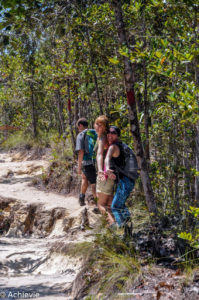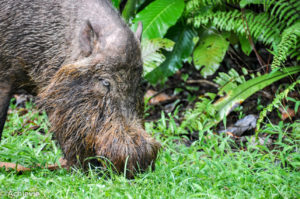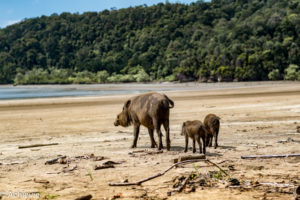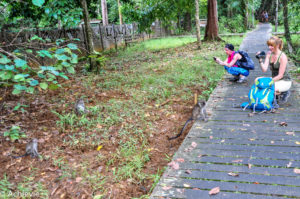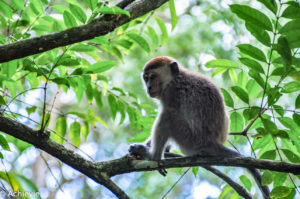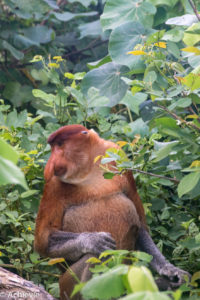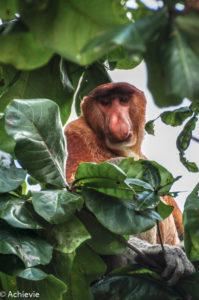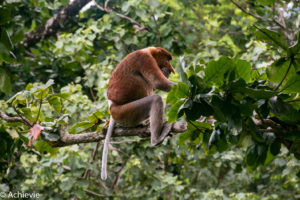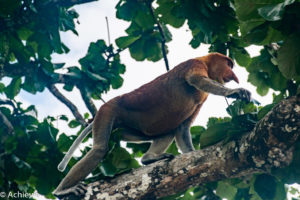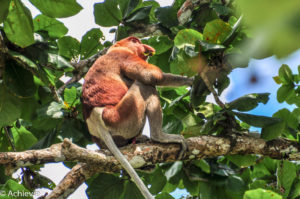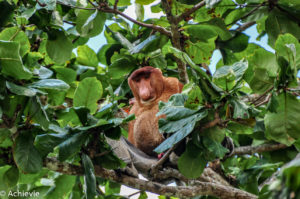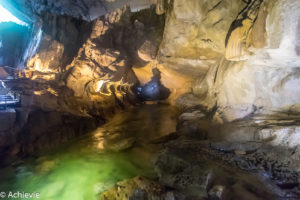Making your way to and back from the park
Bako National Park is located about 40km from Kuching city. You can take a taxi or go for the bus to Bako Bazaar. The bus ride is very cheap – 3,5RM and takes a small hour. In the end we opted for a Grab (like Uber), which was about 15RM for the 4 of us.
Arriving at Bako Bazaar, you need to register and pay the entrance fee which is 30RM. You can get a map of the area with the 16 different hiking routes clearly outlined. We checked in with one of the rangers there to see what would make most sense for us to do. Given that we only had 1 day at the park and considering the opening and closing hours, our options were limited. We also wanted to have the best chance to see some monkeys, the proboscis monkey as our ultimate favourite of course. We selected to take the Telok Paku (0,5km trail length) and Lintang (5,25km loop and estimated to take 3 to 4 hours). We thought this was too easy, given the full day we had, but it would turn out it really wasn’t. Make sure to not underestimate the heat and the fact that you just can’t bring enough water on these hikes to get you hydrated through it all).
You can also opt to hire a guide, but we prefer to do these things on our own, so we didn’t. The guide is only 100RM a day, though.
From there a boat will take you to Bako National Park, which takes about 20 minutes and costs 20RM per person. You need to register at the Park’s HQ upon arrival and need to check-out before leaving. Be aware of the operating hours! On the net we found that the last boat going back was at 3pm and reality wasn’t too far from it, so make sure that you’re back in time or you have an issue. Going to the park, we took the first boat which came at about 8am, which was a little earlier than we had foreseen.
Fauna & Flora
The relative small area of the Bako National Park holds very diverse landscapes – a combination of dense rainforests, stunning beaches and mangrove tree swamps, to name a few. It holds not less than 7 different types of ecosystems. The Lintang trail covers most of them. When it comes to wildlife there’s of course the star of the park – the proboscis monkey, accompanied by the bold long-tailed macaques and silver-leaf monkeys. And don’t forget the particular but cute bearded pig.
Be aware of the macaques though! When returning from the Lintang hike, we got surrounded on the way to the park’s HQ. They were coming from all around and were really aiming for my backpack I had put on the ground in order to get some good pics. Afterwards we heard stories about visitors being attacked by them – bitten in the ankles. So be cautious and most importantly: don’t feed them! That’s exactly the reason why they have become so aggressive and fearless, as they are partly depending on what they get from the visitors.The best time to see animals is – as always – right before dusk, which again requires an overnight stay. We were hoping we could see – at least the proboscis monkey, so tried to be as quite as possible, trying to see them on our hike. Without success, though. The psycho-like macaque encounter was about to be the highlight of the day, until my husband was shouting to get to the beach, where a proboscis monkey was relaxing in the trees. He didn’t need to say that twice – there we were rushing to get a glimpse. And we got more than a glimpse, too. Wonderful!
Facilities
As regards facilities, a local cafeteria offers food and drinks, but if you’re only there for a day, I would recommend to take your lunch with you, to save time. If you want to spend more time and the park – which makes perfect sense, it’s a beautiful place! – you can chose to stay overnight in 3 types of accommodations: hostel, lodge or chalet.



































